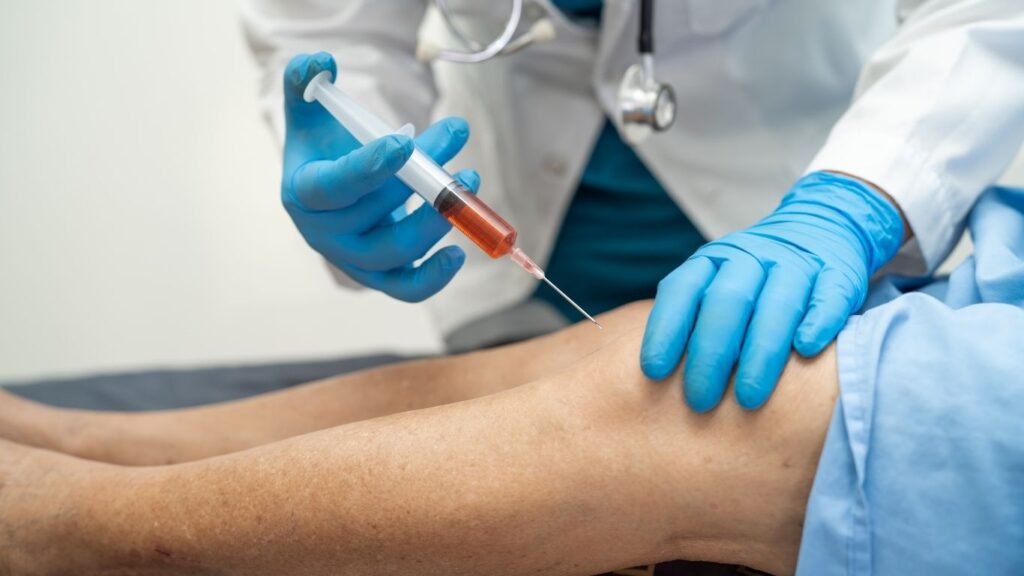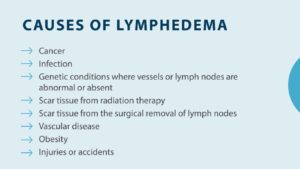The Role of PRP (Platelet-Rich Plasma) in Lymphatic Repair
Definition of Platelet-Rich Plasma (PRP)
Platelet-rich plasma (PRP therapy) is a regenerative treatment derived from a patient’s own blood, containing a high concentration of platelets, growth factors, and cytokines. These components play a crucial role in tissue repair and regeneration. The PRP preparation involves drawing blood, processing it to isolate platelets, and activating it with thrombin or calcium chloride to release growth factors. The final PRP product is injected into the target area, promoting healing by stimulating cellular repair and reducing inflammation.
Overview of the Lymphatic System and Its Importance in the Body
The lymphatic system is essential for maintaining fluid balance, supporting immune function, and removing waste from tissues. Comprising lymph nodes, vessels, and lymphatic endothelial cells, it plays a crucial role in filtering harmful substances and transporting white blood cells. Damage to the lymphatic system can lead to conditions like lymphedema, infections, and impaired immune responses, highlighting the need for effective repair methods.
Purpose of the Blog Post: Exploring the Role of PRP in Lymphatic Repair
This blog post explores the potential of PRP in treating lymphatic damage, focusing on its mechanisms, clinical evidence, and current applications. By understanding how PRP promotes tissue repair and regeneration, we can assess its therapeutic potential for lymphatic health and its future as a treatment option.
Understanding Platelet-Rich Plasma
Composition and Preparation of PRP
The composition of PRP includes platelets, plasma, white blood cells, and growth factors like vascular endothelial growth factor (VEGF). The preparation of PRP involves centrifuging the patient’s blood to concentrate platelets, resulting in autologous PRP that can be injected into damaged tissues. Various methods of PRP preparation influence the concentration of growth factors in PRP, which affects its regenerative properties.
Mechanisms of Action: Growth Factors and Cytokines in PRP
The effectiveness of PRP is attributed to growth factors in PRP, such as VEGF, platelet-derived growth factor (PDGF), and transforming growth factor-beta (TGF-β). These factors promote tissue repair and regeneration by stimulating cell proliferation, angiogenesis, and collagen production. PRP also contains cytokines that reduce inflammation and recruit stem cells, enhancing the body’s natural healing processes.
Current Applications of PRP in Medical Treatments
PRP is successfully used in regenerative medicine for conditions like osteoarthritis, tendon injuries, and hair loss. For example, platelet-rich plasma for the treatment of knee osteoarthritis has shown promising results, improving pain and joint function. PRP is also applied in dermatology, sports medicine, and dental procedures, demonstrating its wide-ranging therapeutic potential.
The Lymphatic System and Its Functions
Anatomy of the Lymphatic System
The lymphatic system consists of lymphatic vessels, lymph nodes, and lymphatic endothelial cells, which form a network throughout the body. Lymphatic endothelial cells line the vessels, facilitating the transport of lymph fluid, which carries immune cells and removes waste. The system also includes specialized organs like the spleen and thymus, which play an important role in immune function.
Role of the Lymphatic System in Immune Response and Fluid Balance
The lymphatic system plays a crucial role in maintaining fluid balance by draining excess interstitial fluid from tissues and returning it to the bloodstream. It also supports the immune response by transporting white blood cells and detecting pathogens. Damage to the lymphatic system can disrupt these functions, leading to swelling, impaired immunity, and increased susceptibility to infections.
Common Conditions Affecting Lymphatic Health
Common lymphatic conditions include lymphedema, caused by fluid accumulation due to blocked or damaged lymph vessels, and infections like lymphangitis. Other issues include lymphadenopathy (swollen lymph nodes) and immune system disorders. Effective treatments are essential to restore lymphatic function and prevent complications, highlighting the potential role of platelet-rich plasma injection in promoting healing.
The Role of PRP in Lymphatic Repair
Mechanisms by Which PRP Promotes Lymphatic Healing
The role of PRP in lymphatic repair involves stimulating the proliferation of lymphatic endothelial cells and promoting angiogenesis, which restores lymphatic vessel function. Growth factors like VEGF and PDGF, present in PRP, enhance tissue repair and regeneration by activating cellular processes and reducing inflammation. Following PRP treatment, the increased blood supply and collagen production accelerate healing, improving lymphatic drainage and reducing swelling.
Clinical Studies and Evidence Supporting PRP Use in Lymphatic Repair
Clinical studies assessing the effectiveness of PRP indicate that PRP can lead to significant improvements in lymphatic function. Research suggests that PRP treatments may reduce lymphedema symptoms, enhance lymphatic drainage, and promote tissue repair. The combination of PRP with other regenerative treatments, such as stem cell therapy, has shown synergistic effects, further supporting its therapeutic potential.
Potential Benefits and Limitations of PRP Therapy in This Context
The benefits of PRP include its natural composition, minimal side effects, and ability to accelerate tissue repair. Compared to conventional treatments, PRP is considered a novel alternative due to its regenerative properties and long-lasting effects. However, limitations include variability in PRP preparation involving different methods, inconsistent results of PRP in clinical studies, and potential risks of PRP, such as infection or allergic reactions. Despite these challenges, the use of PRP in lymphatic repair continues to gain attention as research advances.
Health
Platelet-rich plasma’s role in treating lymphatic damage represents a promising advancement in regenerative medicine. PRP has emerged as a novel treatment option that can accelerate tissue repair and improve lymphatic function. Although PRP is currently used for other medical conditions, its application in lymphatic repair holds great potential for improving patients’ quality of life.
FAQs
Q: What is PRP treatment and how does it work in lymphatic repair?
A: PRP treatment involves the use of autologous platelet-rich plasma, which is derived from the patient’s own blood. The mechanism of PRP focuses on enhancing tissue repair by utilizing the regenerative potential of platelets, which release growth factors and cytokines that promote healing and tissue regeneration.
Q: What are the key benefits of PRP injections for lymphatic repair?
A: The benefits of PRP include accelerated tissue repair, enhanced healing processes, reduced inflammation, and improved recovery times. The efficacy of PRP in treating various conditions is attributed to the high concentration of platelets and the growth factors released during treatment.
Q: Are there any risks associated with PRP injections?
A: The risks of PRP are generally low since it uses the patient’s own blood. However, potential side effects may include pain at the injection site, swelling, and, in rare cases, infection. It is essential to discuss these risks with a healthcare provider before undergoing treatment with PRP.
Q: How does the mechanism of PRP contribute to tissue repair?
A: The mechanism of PRP involves the activation of platelets, which release growth factors that stimulate cell proliferation, attract stem cells, and enhance the healing process. This contributes significantly to tissue repair and regeneration, particularly in damaged areas.
Q: How does PRP compare to other treatment modalities for lymphatic repair?
A: When compared to PRP, other treatment modalities may not offer the same regenerative potential. Platelet-rich plasma has shown superior efficacy in promoting healing due to its concentration of growth factors, making it a novel alternative to traditional treatments.
Q: What is the difference between activated PRP and standard PRP injections?
A: Activated PRP involves the addition of thrombin or other agents to stimulate platelets more aggressively, enhancing the release of growth factors. This can potentially increase the therapeutic potential of PRP compared to standard PRP injections, which may not have the same level of activation.
Q: Can PRP be used for the treatment of male-related conditions?
A: Yes, PRP has been explored for the treatment of male-related conditions, including erectile dysfunction and hair loss. The efficacy of PRP in treating these conditions has shown promising results due to its regenerative properties.
Q: How does the effect of platelet-rich plasma influence the healing process?
A: The effect of platelet-rich plasma on the healing process is significant, as it enhances tissue regeneration by providing essential growth factors that facilitate cellular repair and regeneration. This leads to improved healing outcomes in various injuries and conditions.
Q: What distinguishes platelet-rich plasma from platelet-poor plasma?
A: Platelet-rich plasma contains a higher concentration of platelets than platelet-poor plasma, resulting in a greater concentration of growth factors. This distinction is crucial for the efficacy of PRP in promoting tissue repair and regeneration.





